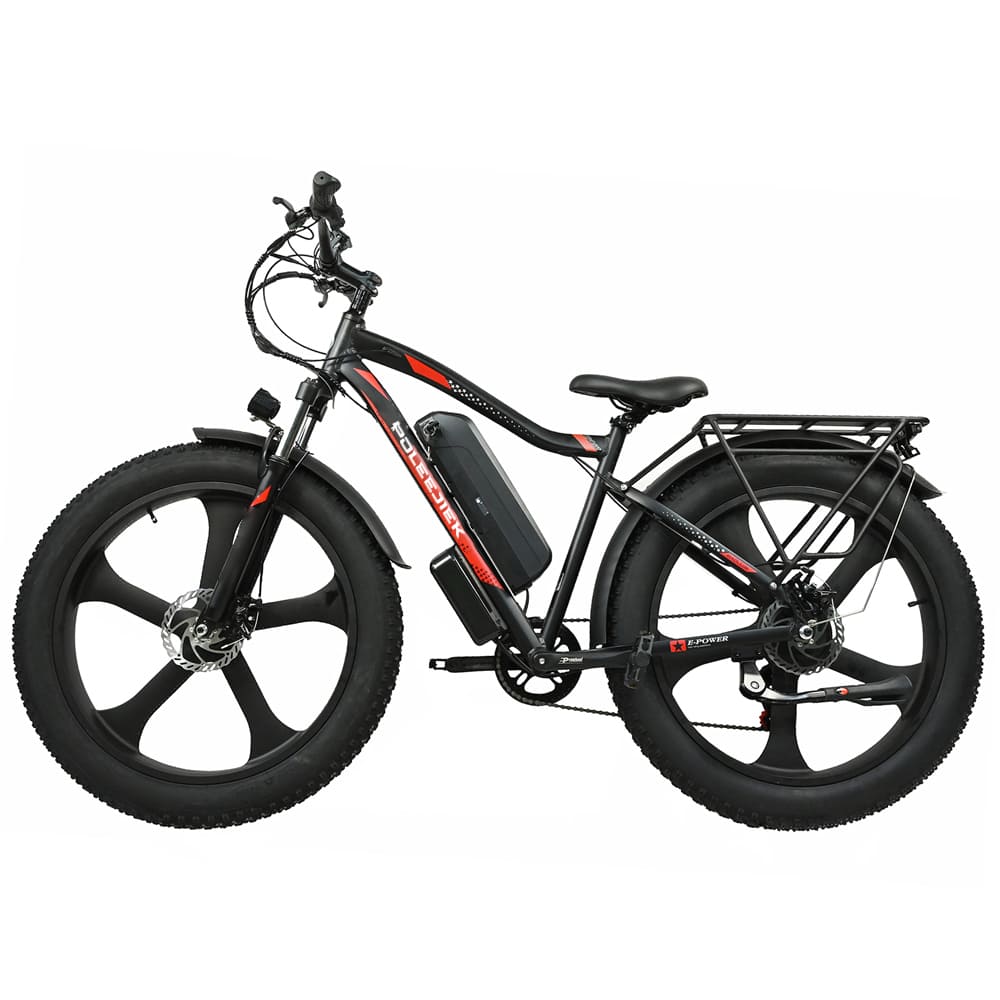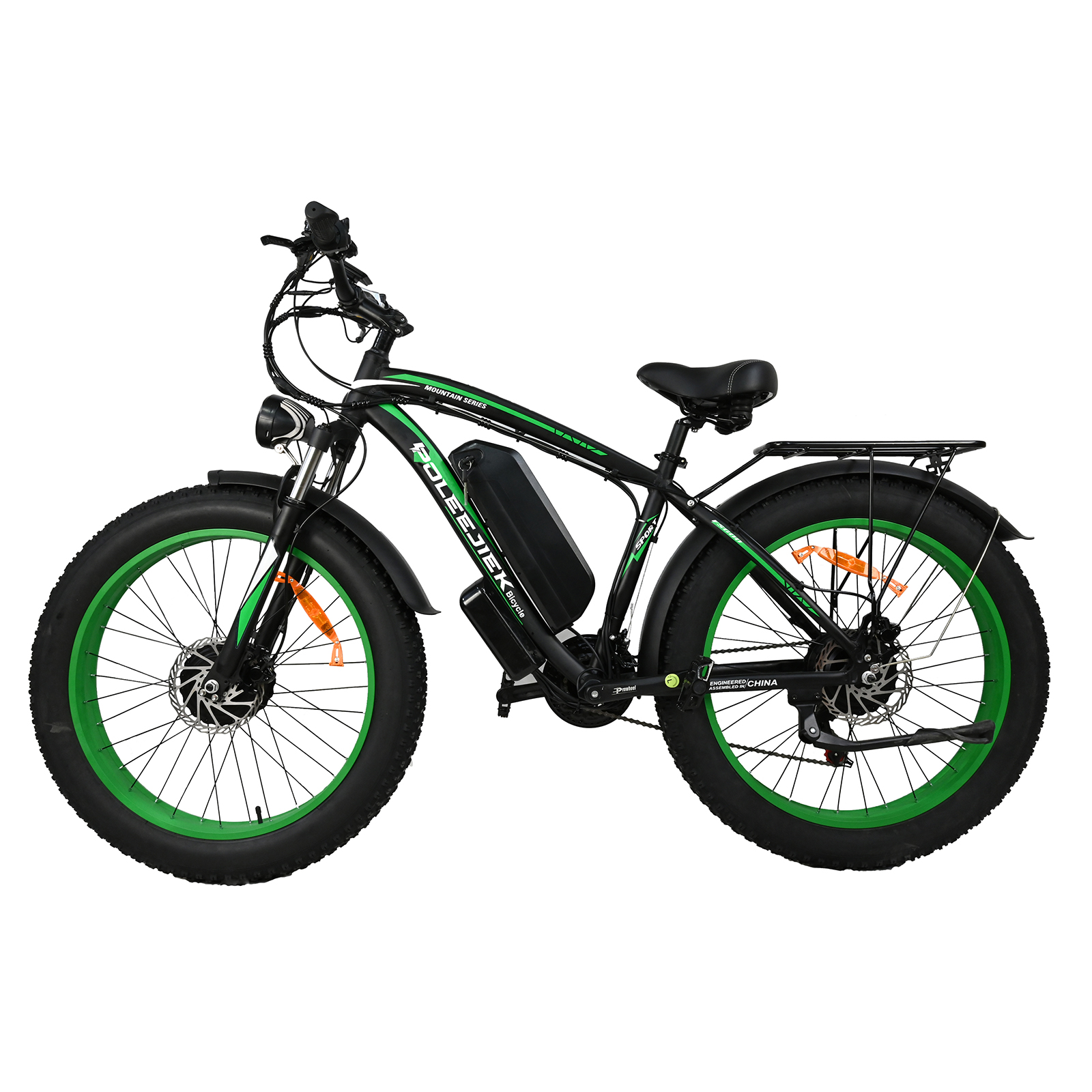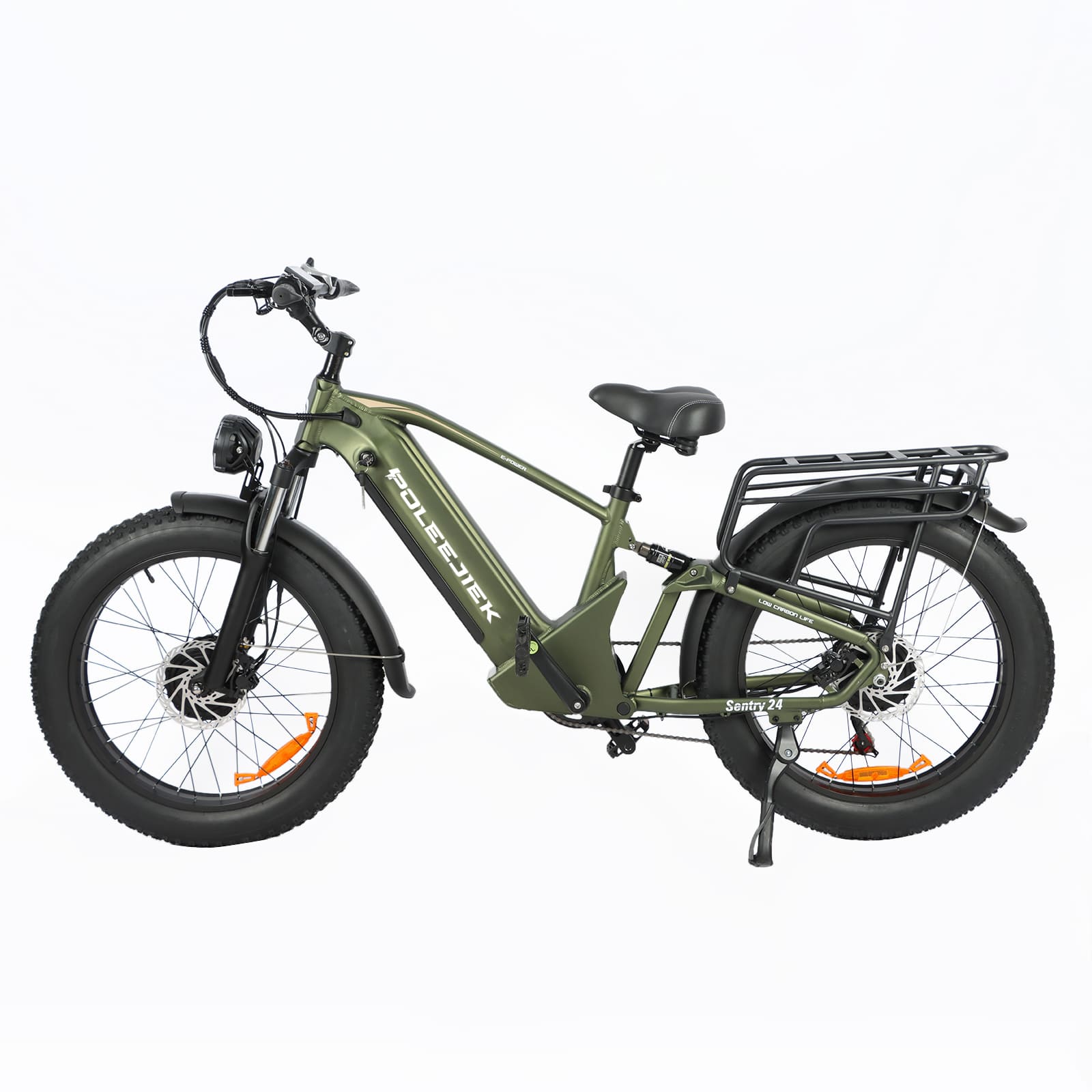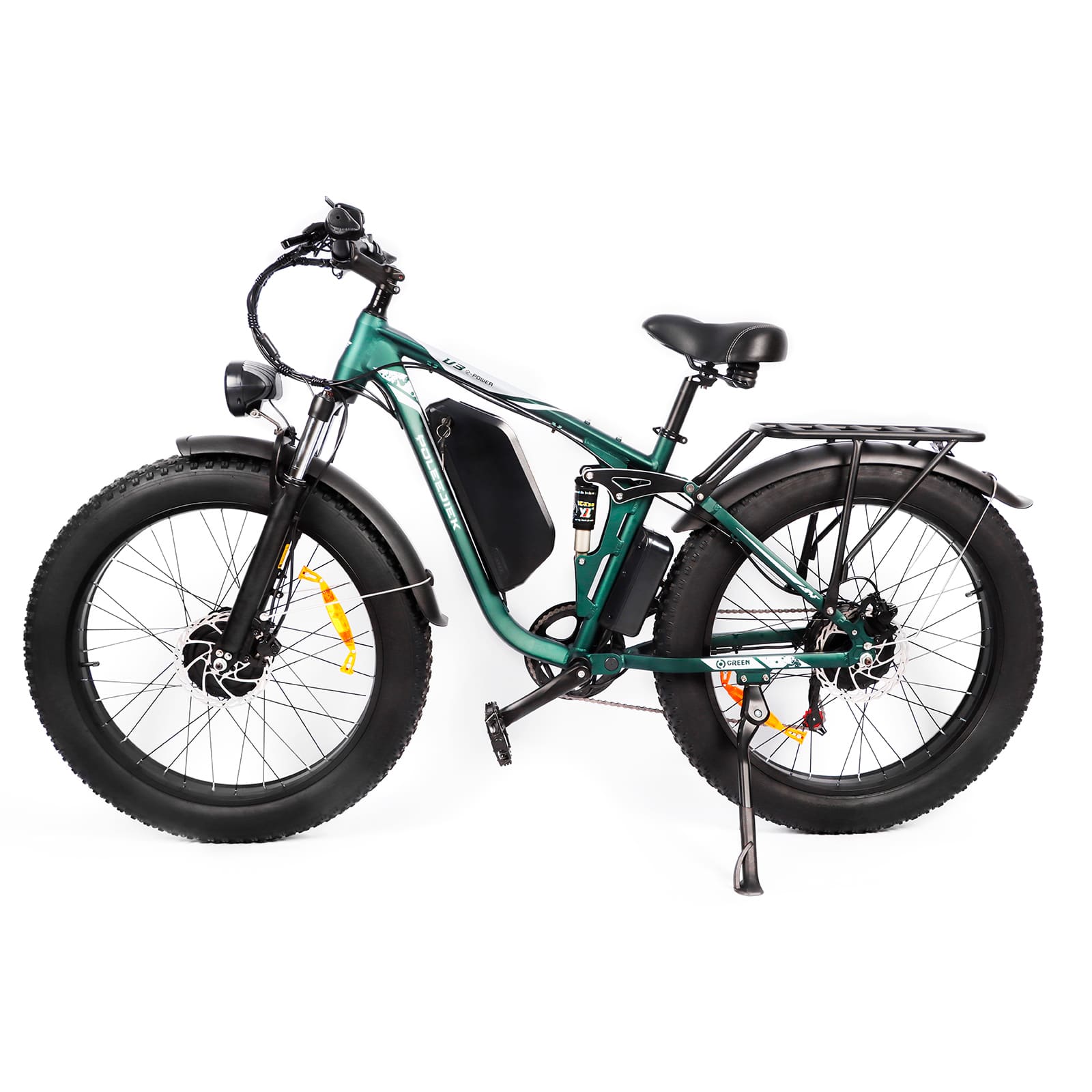Class 1, Class 2, vs. Class 3 Ebike: A B2B Distributor's (US Market) Guide to Inventory & Profit Strategy
For a B2C customer, the three-class ebike system (Class 1, 2, and 3) answers one simple question: "Where can I ride this?"
For a B2B distributor, OEM partner, or reseller, those same three classes answer a far more complex and high-stakes set of questions:
- What is my core inventory strategy?
- How do I execute market segmentation?
- Where are my highest profit margins?
- What is my legal and financial risk?
Stocking the wrong inventory mix—for example, loading a container with high-speed Class 3 ebikes destined for a municipality that only permits Class 1 on its lucrative bike paths—leads to stagnant inventory and margin erosion.
Worse, importing mislabeled or non-compliant ebikes is a legal and financial catastrophe. It exposes your B2B operation to customs seizures, product liability lawsuits, and complete invalidation of your insurance.
This guide moves beyond the simple B2C definitions. We will analyze the ebike classification system from the perspective of a B2B sourcing manager, providing a clear framework for building a safe, compliant, and highly profitable ebike portfolio for the US market.
The Quick B2B Definition: Ebike Classes at a Glance
Before we dive into strategy, let's establish the foundational definitions. In the United States, most states have adopted this three-tiered classification system to differentiate electric bikes from mopeds and motorcycles.

Class 1 Ebike
- Definition: An electric bike equipped with a motor that provides assistance only when the rider is pedaling (pedal assist) and ceases to provide assistance when the bike reaches 20 mph.
- B2B Perspective: This is the "safe bet." It has the fewest restrictions and is the most widely accepted classification globally, especially in a heavily regulated market like the EU (with different power limits). It is your inventory "safety net."
Class 2 Ebike
- Definition: An electric bike equipped with a motor that can be used to propel the bike without pedaling (via a throttle) and ceases to provide assistance when the bike reaches 20 mph.
- B2B Perspective: This is the US market's volume king. The American consumer has shown an overwhelming preference for the throttle-on-demand convenience. For most B2B inventories, Class 2 is not optional; it is the "must-stock" core of your business.
Class 3 Ebike
- Definition: An electric bike equipped with a motor that provides assistance only when the rider is pedaling (pedal assist) and ceases to provide assistance when the bike reaches 28 mph.
- B2B Perspective: This is the high-performance, high-profit-potential category. These bikes command a premium price. However, they also carry the most significant regulatory burden, often being restricted from multi-use bike paths and subject to local age or helmet laws.
B2B Inventory & Profit Strategy: Configuring Your Class 1/2/3 Portfolio
A successful ebike business is not about selling one class; it's about mastering the mix. Your inventory configuration should be a deliberate strategy based on your target market, local regulations, and business goals.
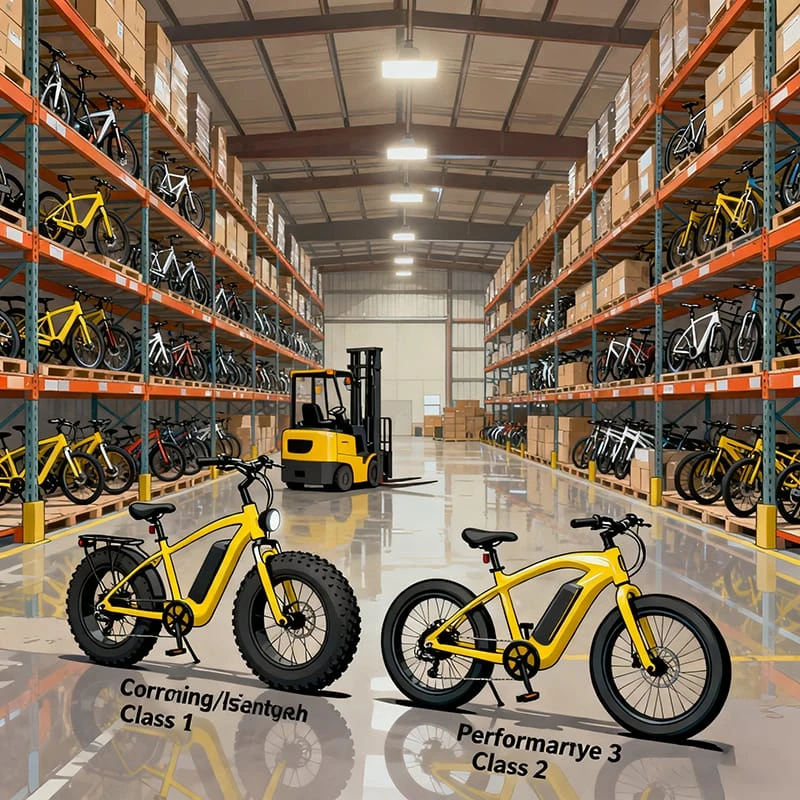
Class 1: Your "Go-Anywhere" & Market-Entry Product
Class 1 ebikes are your foundation. They are the least controversial and most universally accepted models, making them the perfect entry point for both new riders and new distributors.
- Market Positioning: These models excel in categories where "bicycle" is the key term. Think commuter electric bikes for dedicated bike lanes, electric cruiser bikes for park paths, and entry-level electric mountain bikes (e-MTB).
- Target Demographic: The Class 1 customer is often a purist, a commuter in a dense urban area, or a rider in a region with strict e-MTB trail access rules. They want a "boost," not a "motor."
-
B2B Advantage:
- Maximum Compliance: Class 1 bikes are your frontline defense against regulatory headwinds. They are almost always permitted wherever a traditional bicycle is.
- Risk-Averse Markets: If you are a distributor entering a new state or municipality, or if your dealer network is conservative, leading with Class 1 models is the safest path to market entry.
- Insurance & Liability: These models present the lowest liability profile, which can be a significant factor for your commercial insurance premiums.
Class 2: Your "Profit Core" & US Market Mainstay
While Class 1 is the "safe bet," Class 2 is the "volume bet." The ability to use a throttle—to move without pedaling—is a game-changer for the US market and the primary driver of ebike adoption in many segments.
- Market Positioning: This is where the market's hottest trends live. Think fat tire ebikes for all-terrain fun, best folding electric bikes for RVers and urban commuters, and the exploding moped-style ebike category.
- Target Demographic: This is the broadest market. It includes utility riders who want to haul groceries, commuters who don't want to arrive sweaty, leisure riders who want pure fun, and those with mobility limitations who see the throttle as an accessibility tool.
-
B2B Advantage:
- Highest Demand: The B2C demand for "no-pedal" convenience is massive. A B2B inventory without a strong Class 2 lineup is missing the largest segment of the market.
- Market-Proven Velocity: These bikes move. Inventory velocity is high, which is critical for your cash flow.
- The Poleejiek Edge: Our market data consistently shows that Class 2 models, such as our Moped-Style Model and Folding Fat Tire Model, are proven best-sellers. They are the validated workhorses of a successful B2B portfolio.
Class 3: Your "Performance Flagship" & High-Margin Product
Class 3 ebikes are your performance line. They are faster, often built with more premium components (brakes, drivetrain, batteries), and command a significantly higher price point. This is your high-margin play.
- Market Positioning: These are your fast electric bikes and long-distance electric bikes. They are pitched as "car replacement" vehicles for serious, high-mileage commuters.
- Target Demographic: The Class 3 customer is a performance-oriented, often affluent buyer. They need to keep up with traffic (28 mph is key for this) and value speed and efficiency over throttle-based leisure.
-
B2B Challenge & Opportunity:
- The Margin: The R&D, components, and liability for a 28-mph bike mean a higher cost, but the MSRP is proportionally higher, offering excellent profit margins.
- The Responsibility: This is where B2B E-E-A-T (Expertise, Authoritativeness, Trust) is crucial. You cannot simply sell a Class 3 bike; you must educate your dealers.
- Compliance is Key: Your dealers must know the local laws. For example, many states and cities (like New York City) mandate helmets, have age minimums (often 16+), and may require registration for Class 3.
- Poleejiek as Your Partner: We don't just ship boxes. We provide our B2B partners with Compliance Guides, state-by-state regulatory summaries, and point-of-sale materials to ensure their sales team is educated and their customers are safe and compliant.
The B2B Red Line: Avoiding the "Speed Trap"
Now, we address the most dangerous part of your sourcing job. Your B2C customers, and therefore B2C search engines, are full of "buyer intent" keywords that are actually legal landmines for a B2B importer.
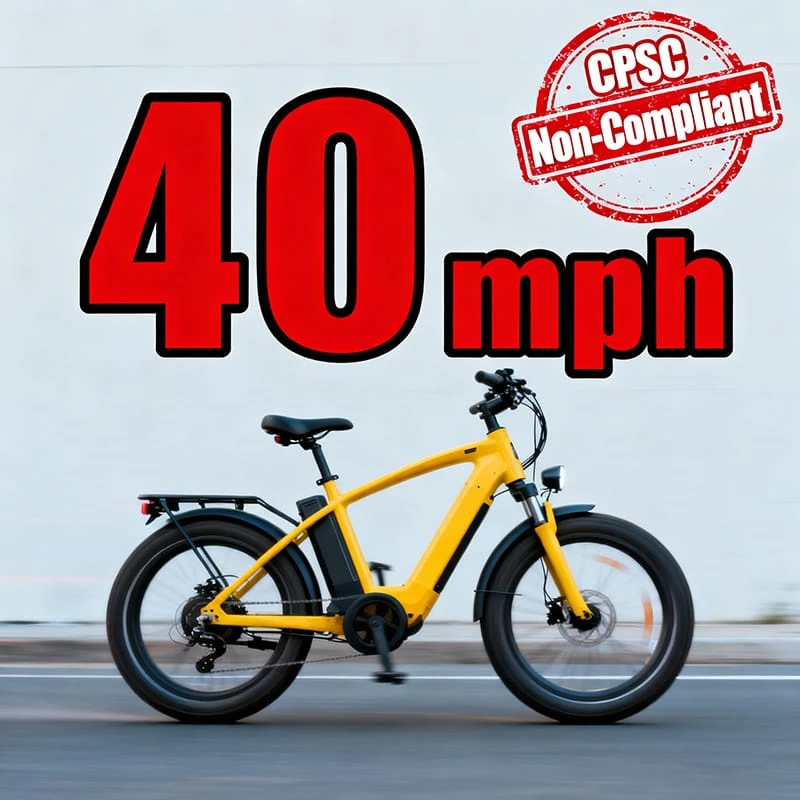
Why "30 mph Ebike" and "40 mph Ebike" are Your Legal Nightmare
Your own market research has likely shown you high search volumes for terms like electric bike 30 miles per hour, 50 mph electric bike for sale, 1000w electric bike, and 2000w ebike.
B2C customers search for this. A new B2B importer sees this as a market opportunity. An experienced, protected B2B partner sees this as a traffic trap.
Let's be unequivocally clear: In the United States, a two-wheeled electric vehicle that goes over 28 mph is NOT an electric bike.
It is legally classified as a Moped, Motor-Driven Cycle, or Motorcycle.
This reclassification is not a minor detail; it is the entire legal foundation of your business. A product sold as an "ebike" that is, by law, a "moped" is a fraudulent and illegal product.
Warning for Importers: The Catastrophic Risks of "Overspeed" Ebikes
If you import a container of ebikes labeled as "Class 3" but they have a 1000w electric bike motor that is not firmware-locked to 28 mph, you are not selling bicycles. You are selling unregistered motor vehicles.
The risks are existential for your business:
- Customs Seizure: US Customs and Border Protection (CBP), in conjunction with the Consumer Product Safety Commission (CPSC), can (and does) seize entire shipments of non-compliant ebikes at the port. This is a 100% financial loss.
- Massive Fines: The CPSC has the authority to levy millions of dollars in fines against importers and distributors for selling non-compliant or mislabeled consumer products.
- Product Liability Lawsuits: This is the business-killer. When a customer inevitably gets into an accident on a 40-mph "ebike" you imported, the plaintiff's attorney will discover it's an illegal, unregistered motor vehicle. Your product liability insurance will be voided (as you did not accurately describe the product), and your company will be personally and fully liable for the damages.
This is the "speed trap," and many overseas factories will happily sell you whatever you ask for. It is your responsibility as the importer to ensure compliance.
The Poleejiek Commitment: This is our non-negotiable promise to our B2B partners. We do not gamble with your business. All our class 1 ebike and class 3 ebike models are strictly firmware-locked to their legal speed limits (20 mph and 28 mph, respectively). Our CPSC-compliant labels are 100% accurate, reflecting the actual performance of the bike, not just a sticker. We ensure your legal and financial safety.
Poleejiek: Your Partner for the Perfect B2B Inventory
Choosing a supplier is not just choosing a product. It's choosing an inventory strategist, a compliance partner, and a supply chain expert.
Your B2B supplier should be your first line of defense against the very pain points that keep importers awake at night.
Solution 1: Accurate Labeling & Verifiable Firmware (Solves Pain Point #2)
You must be able to trust that the label on the bike matches the bike in the box. Our quality control process is built on this trust. We guarantee that every Moyoebike that leaves our factory is 100% compliant with its CPSC-mandated label. The speed, motor wattage, and class are verified, locked, and documented. This protects you from legal risk and secures your supply chain.
Solution 2: Flexible MOQ & Mixed Containers (Solves Pain Point #4)
Why gamble on 100 units of a single model for a market you're still testing? That's a "Pain Point #4" (Inventory Risk) waiting to happen.
Poleejiek offers a true partnership model. We allow our B2B clients to mix and match Class 1, Class 2, and Class 3 models within a single container. You don't have to bet the house. You can test your local market with 30 Class 1 commuters, 50 Class 2 fat-tire bikes, and 20 Class 3 performance models—all in one shipment. This flexible MOQ strategy empowers you to find your market's "perfect mix" while minimizing risk and maximizing cash flow.
Build Your 2025 Ebike Strategy Today
Don't gamble on your ebike inventory strategy. The line between a best-selling container and a container-sized liability is defined by compliance, market knowledge, and strategic sourcing.
Contact the Poleejiek B2B expert team today. We'll provide you with a complimentary, no-obligation "Ebike Classification Market Analysis & Compliance Report" tailored to your specific state or region.
Let's work together to build your 2025 best-selling product line.



